Snowy mountain peaks, endless forests, rolling hills, fine sandy beaches, the aquatic paradise of the Danube Delta, medieval towns and traditional villages, all these elements make Romania an amazing destination to discover. Known as Dracula’s country, Romania’s tourist potential exceeds by far the stories of ghosts and vampires that made the country famous in the world.
From a cultural point of view, Romania is a unique country, being the only Latin country in Eastern Europe. Looking at the map, we can say that Romania is like an island of Latinity surrounded by a Slavic sea, all its neighbors, except Hungary, being Slavic countries. Thus, Romania is the only predominantly Orthodox Latin country, which is explained by its proximity to Constantinople.
From a culinary point of view, Romania is a unique mix of Ottoman and Central European elements, Romanian food retaining the best of these two cuisines. The best way to describe Romanian cuisine is tasty, simple, and hearty.
While planning your visit to Romania’s breathtaking destinations, it’s crucial to be prepared for any situation. Whether you’re exploring the medieval castles of Transylvania or the vibrant streets of Bucharest, having access to reliable legal services can offer peace of mind in unexpected circumstances, especially if you are a business traveller.
Let’s have a look at the best places to visit in Romania by a local:
20 Best Places to Visit in Romania:
1) Sibiu
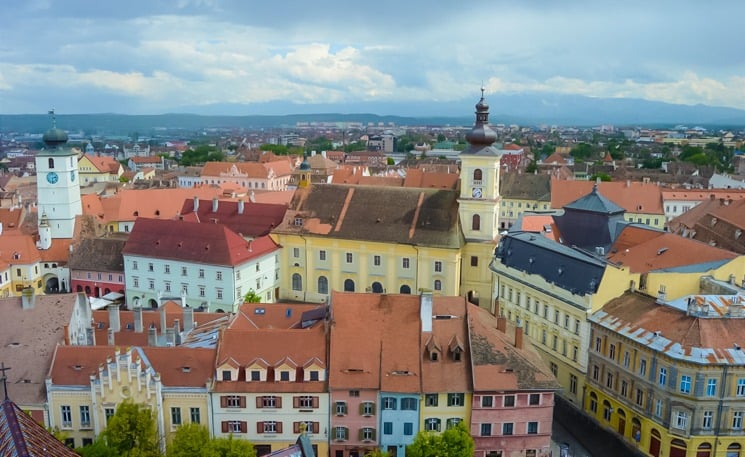
Sibiu is a charming little town in the south of Transylvania. The former capital of culture in 2007, Sibiu is ranked 3 stars by the Michelin guide, which means they highly recommend the city to visit and should definitely belong to your Europe bucket list. It is easy to understand why: the former medieval town preserved most of its historical town: impressive defense walls dating back from the 15th century, elegant baroque buildings, gothic churches.
The charm of Sibiu consists of the 3 adjacent squares, a meeting place, and a promenade for tourists and locals alike. In summer, the festive atmosphere emanates from every corner, with live music sounds, with relaxed people enjoying a drink or dinner in the warm evening air. While in Sibiu, look for your eyes on the roofs. No, no one is spying, but the attic skylights have a sleeping eye shape, which became kind of trademark for the city.
2) Transfagarasan
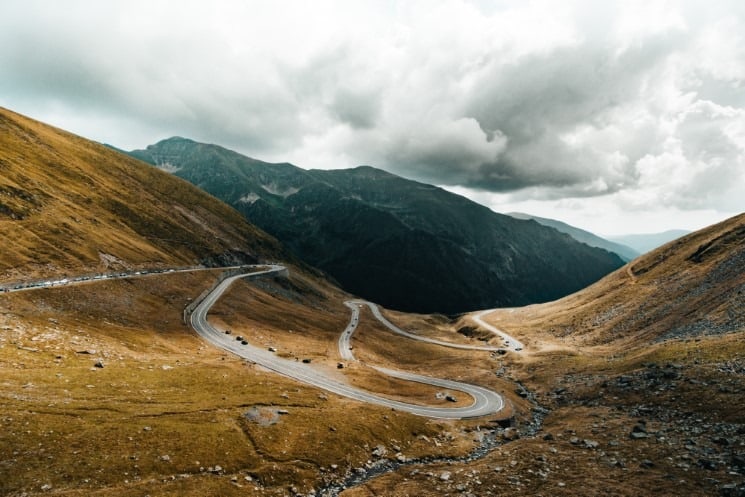
Transfagarasan is a mountain road that crosses the Carpathian Mountains from north to south, reaching up to 2000 meters in altitude. Crossing the Transfagarasan is the best driving experience, with countless hairpin curves, dangerous ravines just one meter from the edge of the road, jaw-dropping mountain landscapes, with dozens of waterfalls showing at every corner. On Transfagarasan there are great chances to be with head in the clouds, literary. And sometimes above the clouds. The road is closed from November till July, so the road trips planners must take this into consideration. It’s definitely one of the best places to visit in Romania.
3) Danube Delta
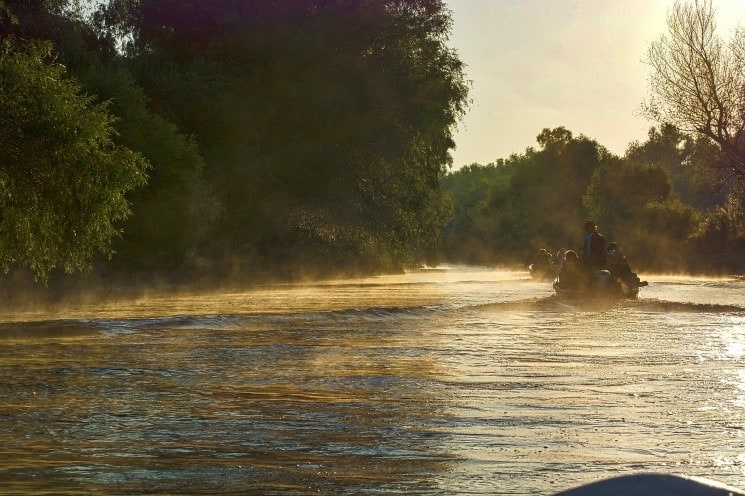
Before meeting the sea, the second largest river in Europe, the Danube, divides itself into 3 branches, to form the Danube Delta, a lush universe of marshes, floating reed islands, and sands. The labyrinth of channels bordered by thatch, willows, and oaks trapped in lianas, offers the perfect habitat for a myriad of water birds of all sorts, fish, and mammals.
The delta is the perfect place for wildlife lovers, birdwatchers, fishers, nature photographers, and anyone wanting to isolate in nature, away from civilization, for a few days. The best time to visit Delta is from spring to late autumn, and most of the tours are starting from Tulcea, the place where the Delta begins. One can rent a speed boat for a shorter time and reach the Black Sea in around 6 hours, but we recommend allowing a few days for a complete experience in the Delta. One experience to try in the Delta is the gastronomy, based, of course on fish: there are plenty of dishes to try, from hearty fish soups to fine black caviar.
4) Maramures traditional villages
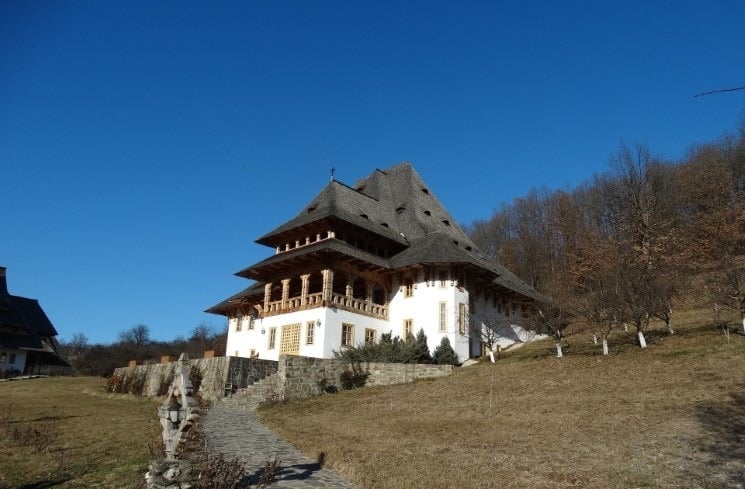
Maramures is one of the historical regions of Romania which best preserved the rural culture. Located in the northern part of Romania, on the border with Ukraine, in a mountainous area, Maramures can be considered a living museum. The traditional art of wood is representative of Maramures: monumental gates and houses decorated with traditional symbols, wooden churches with towers that rise high in the sky.
Also, Maramures is one of the few areas in Romania where the traditional costume is worn every Sunday or during the holidays. Maramures is famous for horinca, a fruit distilled alcohol that is offered to any visitor, as a sign of hospitality. For the uninitiated, taste it carefully, because it is very strong, having over 50 degrees.
5) The Merry Cemetery

Have you ever imagined something “merry” about a cemetery? In Maramures they did. In Sapanta, in the far north of Romania, death is seen as a normal stage in the cycle of life. The crosses in the local graveyard are painted in vivid colors, predominately blue. The woodcarver, who is also making the crosses is writing the epitaph on the cross in a rather funny manner.
The first crosses of this kind were placed in the cemetery in the 30s, and today, the entire burial ground is populated with more than 800 such crosses. The funeral monuments, carved from oak, are making the cemetery a unique open-air museum and a tourist attraction alike.
6) The Saxon fortified churches
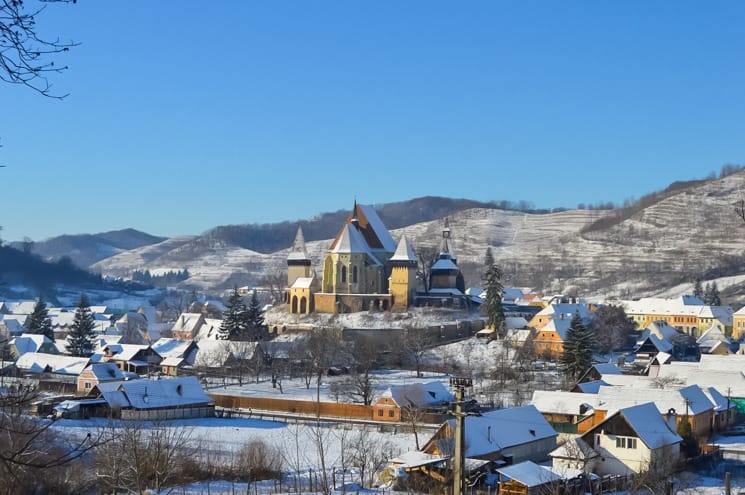
Saxon fortified churches are a unique architectural phenomenon in the world. Churches are like any other church, but what makes them special is the defensive system around them. The church-fortification combination can be found in Transylvania, in the former Saxon villages. Each village (around 300) built such a fortification to provide protection to the local community against the frequent Turkish attacks of the Middle Ages. Initially, churches were built without the protective wall around them, but starting in the 15th century, the community began to add defensive walls, towers, and sometimes even bastions.
Currently, about 100 fortified churches remained in Transylvania, and 7 of them are inscribed on the UNESCO World Heritage List. Our recommendation is to visit at least the fortified churches of Biertan, Prejmer, or Viscri.
7) The Danube Gorges – Iron Gates Natural Park
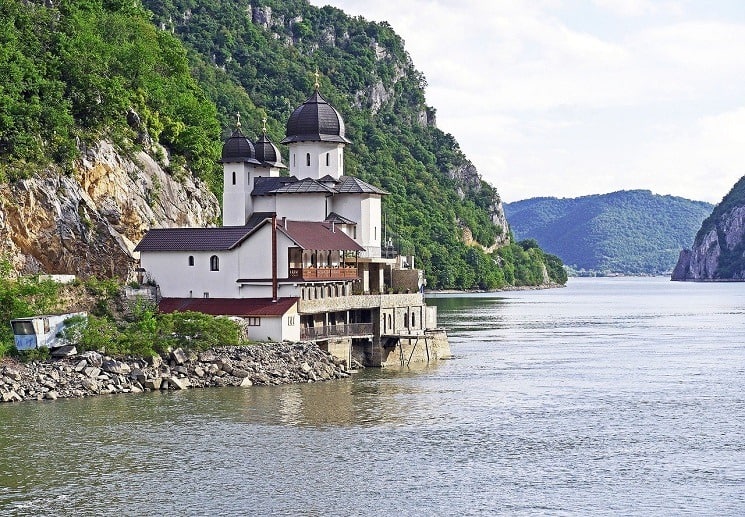
The Iron Gates is a canyon bordered by the Carpathian Mountains in the north (on the Romanian side) and the Balkan Mountains in the south (on the Serbian side), where the Danube found its way to the Black Sea. The best point to see the keys is the village of Dubova, where, after a 30-minute walk, visitors can enjoy splendid views of the Danube
flowing through the narrow canyon. From the nearby ports, one can start small cruises through the gorge, from where the visitors can admire stone-carved inscriptions dating from the Roman period, or visit a few caves, directly accessible from the Danube.
8) Turda Salt Mine
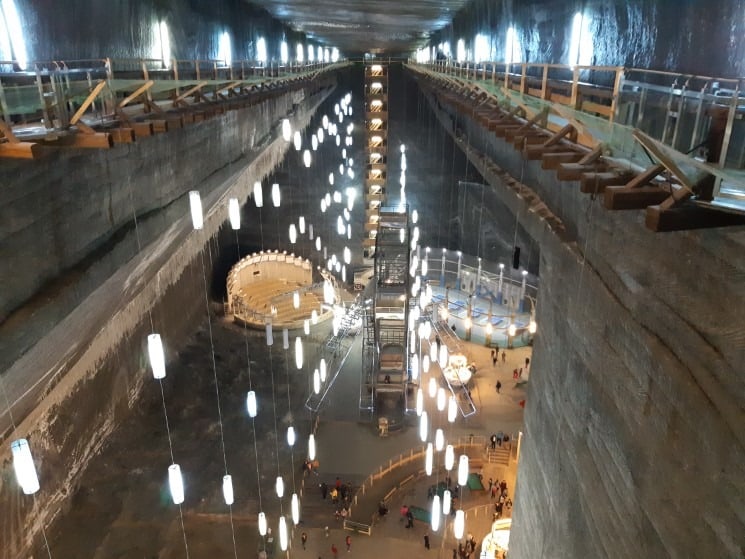
Turda Salt Mine is a former salt mine transformed into a tourist attraction, in Turda, Transylvania, near Cluj-Napoca. Started in antiquity, salt mining ceased in the 30s. In 2008, the cavities from the Austro-Hungarian period were arranged for tourism. After a walk of a few hundred meters through the salt evacuation gallery, the visitor reaches the 2 huge salt caves opened for visit. The deepest one, bell-shaped, has a depth of 112 meters, and at its bottom is a small lake, where tourists can rent boats.
The other mine, 40 meters deep and 80 meters long, in the shape of a trapezoid, is a small amusement park, with a Ferris wheel, mini-golf, ping pong tables, or a mini football field. The visit to the mine is like a journey into the depths of the earth, the visitors being impressed by the salt abyss and the lunar atmosphere of the whole ensemble. It’s certainly one of the best places to visit in Romania.
9) The painted monasteries in Bucovina

Built-in the 15th-16th centuries in Bucovina, the northeastern part of Romania, the painted churches impress their visitors with the exterior murals whose colors have survived the harsh environment for more than 400 years. Both interior and exterior paintings had the role of more easily conveying the stories of the Bible and the values of Orthodoxy to a mostly illiterate population.
A masterpiece of the Byzantine art, several churches have been inscribed on the list of UNESCO monuments: Arbore, Humor, Moldovita, Patrauti, Probota, Sfantul Ioan cel Nou (Suceava), Sucevita and Voronet. The most famous among them in Voronet, with its exterior painting on a blue background that gave the name of a color: “the Voronet blue”. If you need more inspiration, check these interesting places to visit in Bucovina.
10) Timisoara

Timisoara is located in the western part of Romania, close to the border with Hungary and Serbia, just a few hours drive from Budapest or Belgrade. The European Capital of Culture in 2021, Timisoara is the Romanian city with the strongest Viennese look. And there is no wonder, as the historic district abounds in Baroque and Art Nouveau palaces and churches, inspired by Viennese architecture. The connections with Vienna were made after Timisoara was conquered by the Austrian armies from the hands of the Turks in the 18th century. After that victory, the entire region was embedded in the Austrian Empire, and the city was rebuilt from scratch.
While in Timisoara, do not miss a walk through the historic district, visiting the 3 main squares (Union Square, Liberty Square, and Victoriei Square). Also, a good way to explore Timisoara is on board of the small boats from the Bega canal or by the tourist tram.
11) Bran Castle
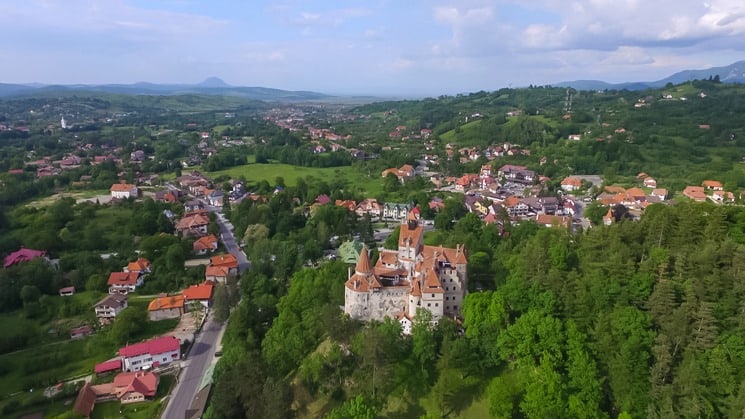
Bran Castle is perhaps the most famous tourist attraction of Romania, being frequently associated with Dracula’s Castle. It belongs between the 10 most beautiful castles in Romania. The truth is that the castle has little to do with the infamous vampire, but that does not stop hundreds of thousands of tourists from stepping on its doorstep every year. Built-in the 14th century as a border stronghold, the castle changed its role when in 1922 it became the summer residence of Queen Maria of Romania. Oscillating between legend and facts, the castle image swings between the gloomy appearance from the Dracula movies and the romantic aspect that the queen saw when she chose the medieval fort to be her residence.
12) Peles Castle
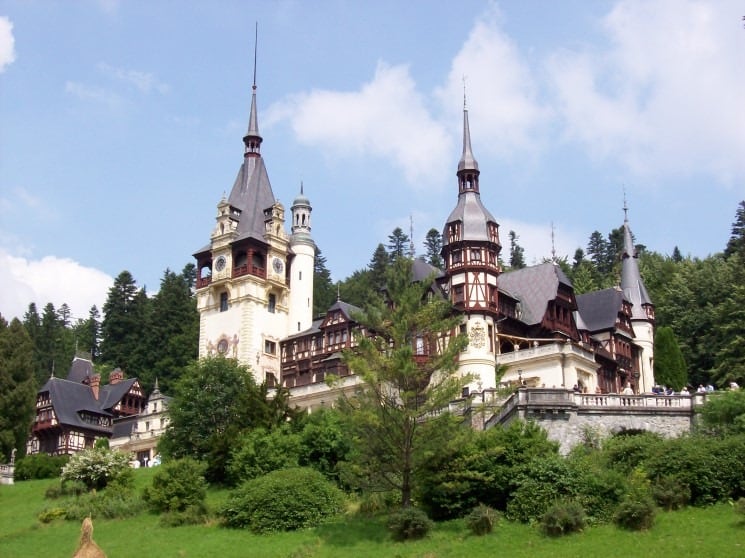
Peles Castle is the residence of the first king of Romania, Carol I. Built between 1873 and 1914, the castle bears the imprint of the aesthetic style of the king, an art-loving erudite. The architectural style is an eclectic one, the most frequent elements being taken from the German Neo-Renaissance. Upon completion, the castle was one of the most modern buildings in the world, with central heating and ventilation, electricity, elevator, or central vacuum system. Today, visitors can admire the castle interior decorations, king’s weapons, and art collections, public salons, or the royal family’s private spaces, as they looked 100 years ago. Certainly one of the best places to visit in Romania.
13) Corvin Castle
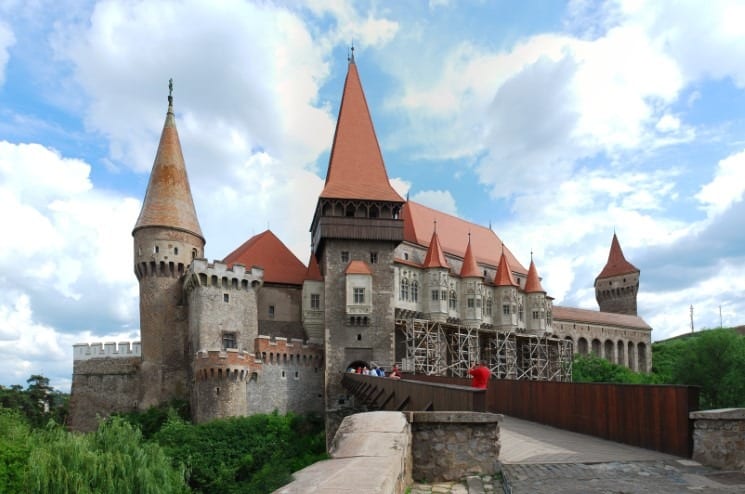
The picture of Corvin Castle should be placed in the dictionary next to the word castle. Because there is no better description of this word than an image with the Castle of Ioan Corvin from Hunedoara. Equally, this castle could have been easily the source of inspiration for Walt Disney cartoons with princes and princesses, due to its fairytale look. At first glance, the castle impresses visitors with its Gothic stone decorations, sharp towers, and the drawbridge, under which a rushing river flows.
The largest Gothic castle in Transylvania, Hunedoara Castle was built in the 15th century by the governor of Transylvania, Ioan (John) Corvin, and was extended by his son, Matias Corvin, the king of Hungary. It is located in Hunedoara, a small industrial town in the southeastern part of Transylvania.
14) Bucharest
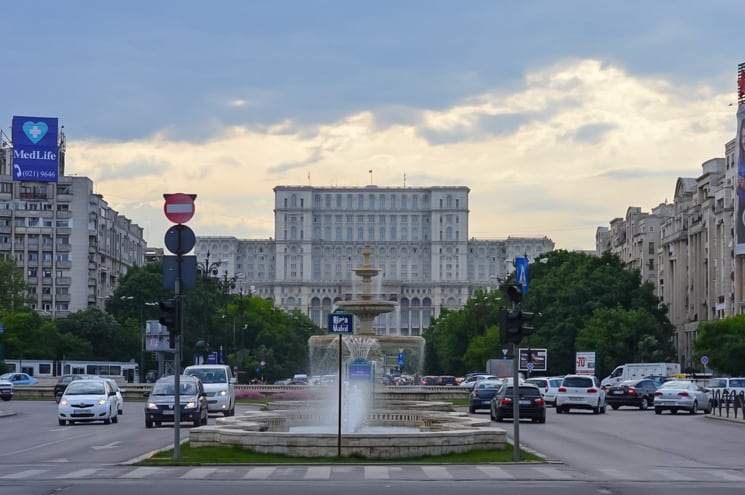
The capital of Romania, Bucharest is a good exponent of Romanian culture: an original mix between east and west, between old and new, between communism and capitalism. The most visited area in Bucharest is the old town, rich in Byzantine, neo-Romanian, neo-classical or French-inspired architectural elements from the “la belle epoque” period. Thus, in its heyday in the late 19th century, Bucharest was called “Little Paris”. Unfortunately, the communist period destroyed an important part of the old city and in its place appeared communist buildings of dubious architecture.
The most famous building is the People’s Palace, the second-largest building in the world, after the Pentagon. Reconverted into the Romanian Parliament building, the palace became a tourist attraction, tourists being able to find out the details of the megalomaniacal construction emerging from the madness of the former communist dictator, Nicolae Ceausescu.
For more inspiration, check best things to do in Bucharest.
15) Sighisoara
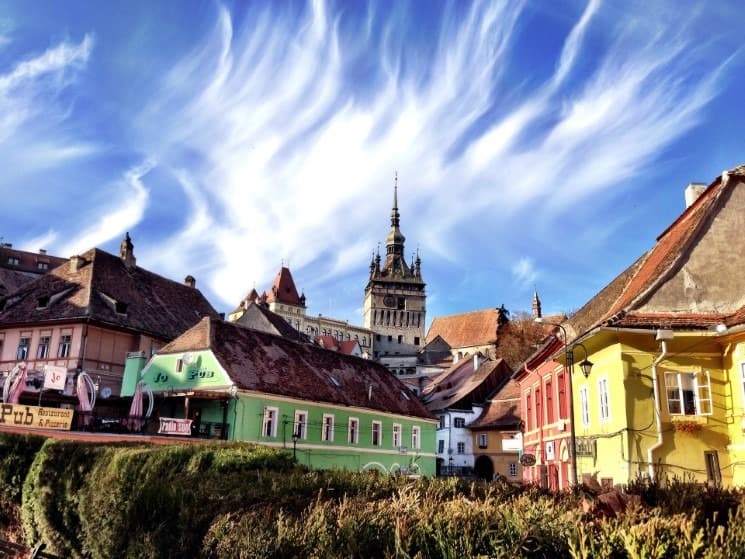
Sighisoara is a small town in Transylvania, the smallest of the 7 cities built by the Saxons there. Keeping relatively intact its appearance from a few centuries ago, Sighisoara is one of the few medieval cities still inhabited in Europe. Colorful buildings from ancient times, fortified defensive walls, towers and bastions, cobbled streets leading to hidden corners, small squares with beautiful cafes, all these attract thousands of tourists every year.
Above all, Sighisoara is the birthplace of Vlad Tepes, the cruel prince who inspired Bram Stoker in creating the character Dracula. An extra reason to visit Sighisoara for fans of vampire stories. While in Sighisoara, don’t miss visiting the Clock Tower, one of the former defense towers, nowadays a museum. It offers a good insight into the history of Sighisoara and an amazing view from above over the citadel.
16) Oradea
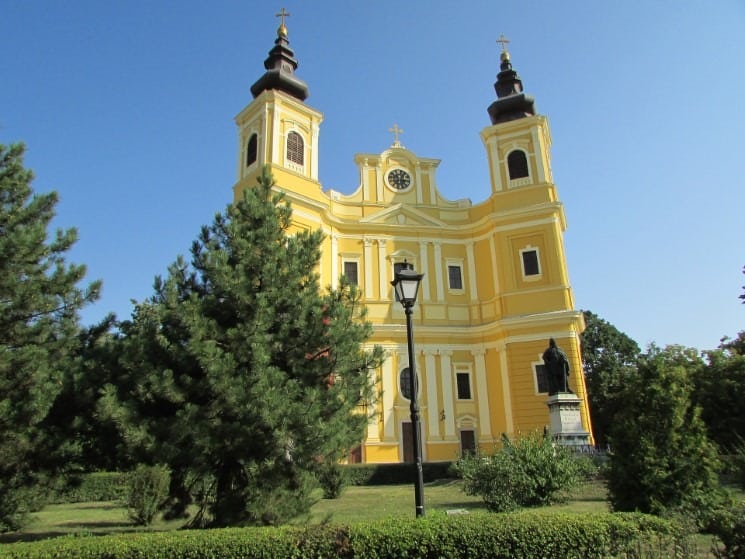
Oradea is a city located in western Romania, very close to the border with Hungary. Founded in the 11th century by the holy Hungarian king, Ladislaus I, the city has a rich history, belonging to the Hungarian kingdom, the principality of Transylvania, the Ottoman Empire, the Habsburg Empire (later the Austrian-Hungarian Empire) and Romania. Orbiting for centuries under the influences from Budapest and the Viennese Court, Oradea is called the Art-Nouveau city, displaying the largest collection of buildings built in this style in Romania.
The architectural repertoire is not limited to Art Nouveau, numerous baroque buildings or the Renaissance style fortress are making the city a perfect destination for art and architecture lovers. Crossed by the river Crișul Repede, Oradea is a short distance from one of the most important spas in Romania, Băile Felix.
17) Cluj-Napoca
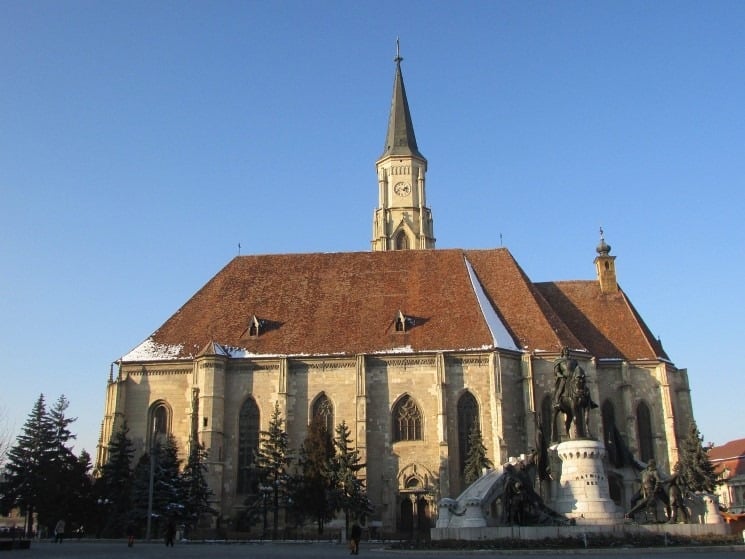
The largest city in Transylvania, Cluj-Napoca was founded in antiquity by Roman settlers. A multiethnic city, inhabited by an important Hungarian community, Cluj-Napoca is a cosmopolitan city and a large university center. The youthful atmosphere and the constant buzz of the visitors found a perfect setting in the historic district of Cluj, rich in architectural masterpieces from the 18th and 19th centuries. One of the iconic buildings from Cluj, dominating its skyline from the 14th century is the Saint Michael gothic church, erected in the heart of the old town, in Union Square.
Cluj is also the place where the most important dance music festivals are organized annually, UNTOLD festival, for example, becoming a reference among such events in Europe.
If you need more inspiration, check this ultimate guide about Romania.
18) Brasov
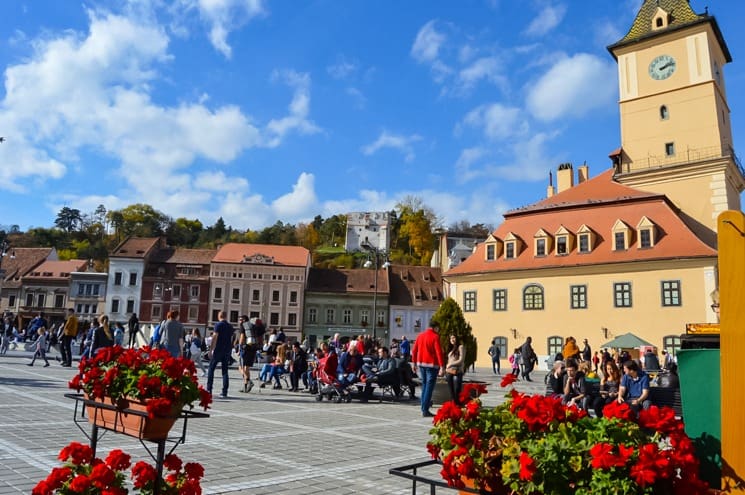
Another Saxon city in Transylvania, Brasov is located at the foot of the Carpathians, in the southeastern corner of Transylvania. Inheriting a very beautiful historical center, located near Bran Castle and Peles Castle, Brasov is also one of the most attractive tourist cities in Romania. Brasov is also a destination sought by winter sports lovers, just 20 minutes from Brasov being Poiana Brasov, the most important ski resort in Romania.
Brasov boasts the largest Gothic church east of Vienna, the Black Church. Visitors arriving in Brasov can enjoy a special view of the church and the city from Mount Tampa, where they can get by cable car, or on foot, after a hike of about an hour.
19) Magura and Pestera villages
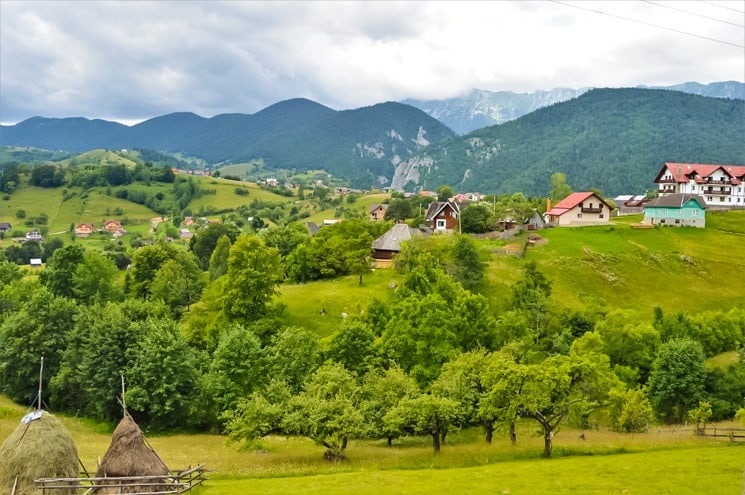
Magura and Pestera are two charming villages located in a mountainous area between Piatra Craiului and Bucegi mountains, very close to Bran Castle. The villages are a perfect destination for of hiking or photography lovers. The country roads of the village allow countless walks, both on foot or by bike, and the ridges of the nearby mountains offer multiple opportunities for passionate or amateur photographers. In these villages, although affected by modernity, one can still see traditional houses covered by shingle, flocks of sheep grazing on nearby pastures, haystacks, or carts pulled by horses.
20) Rosia Montana
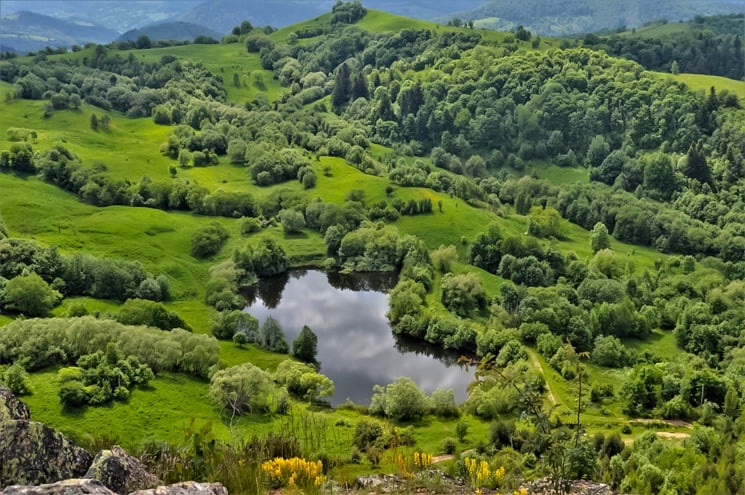
Rosia Montana is an ancient gold mining town in the heart of the Apuseni Mountains. Gold mining has existed since antiquity, the underground of the town becoming a labyrinth of hundreds of kilometers of galleries dug in almost 2,000 years. Some of the Roman galleries have been arranged for visitors, tourists being able to discover details about the mining methods from 2 millennia ago. In addition to the history of mining, tourists can go hiking and enjoy the beautiful landscapes of the Apuseni Mountains.
Near Rosia Montana is a massive basalt massif, where nature has carved almost
perfect square columns in stone: Detunata.
Map of the best places to visit in Romania
We have prepared a detailed map of all the best places to visit in Romania to help you plan your trip out. The map can be exported and uploaded to the mobile map app like Maps.me or Locus maps.
- Check here all our travel planning maps.
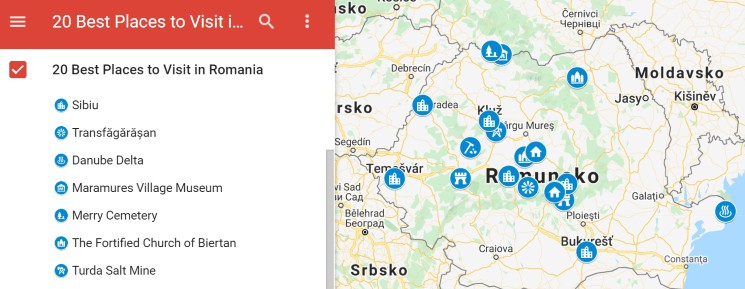
Places to Visit in Romania Video:
Author’s bio:
Places to visit in Romania was written by Florin Ionescu, who is a travel writer and a tour guide for Romania Guided Tours Travel Agency. He is organizing private tours in Romania since 2013 and loves designing custom tours for foreign visitors, focusing on rural culture, local gastronomy and nature.
More tips for your travels:
We have prepared for you this comprehensive list of links, discounts, and resources for travel planning in one place. Bookmark this page and whenever you plan a vacation in the future, just open it and save yourself a lot of time.
1) Where to book accommodation?
- We prefer to find an accommodation using Booking.com.
- It's also worth it to compare with AirBnb.
- Read also our guide - How to search for the best accommodation.
2) How to find cheap flights?
- We recommend searching for flights on Skyscanner.
- Read also our complete guide - How to find cheap flights.
3) How to rent a car?
- We recommend a comparison portal RentalCars.com to compare the best offers of all available rental companies.
Pin Places to Visit in Romania for later or for your friends:
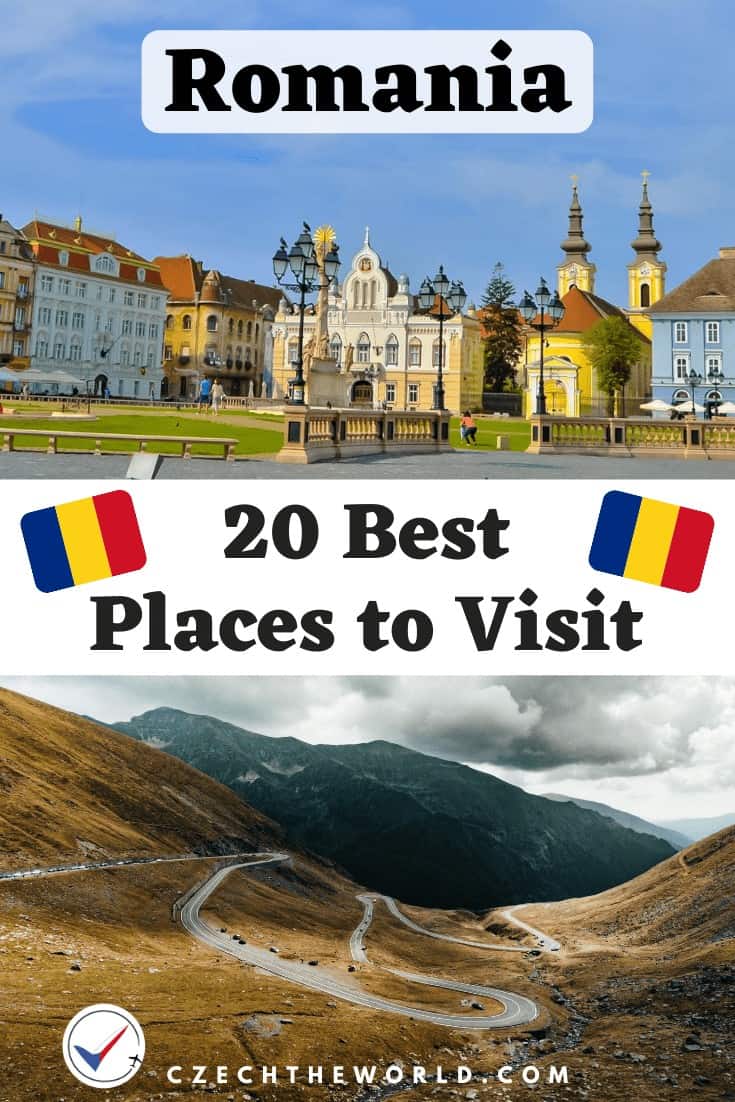
Best places to visit in Romania – FAQ:
Is there a downloadable map of the best places to visit in Romania?
Yes, here you can find a detailed map of the best places to visit in Romania, which you can download to your mobile phone.
How to find accommodation in Romania?
Accommodation options in Romania are huge. The easiest way is to book hotel or hostel at Booking.com.
What are the best places to visit in Romania?
There are several places you should not miss. Read here about 20 best places to visit in Romania.

